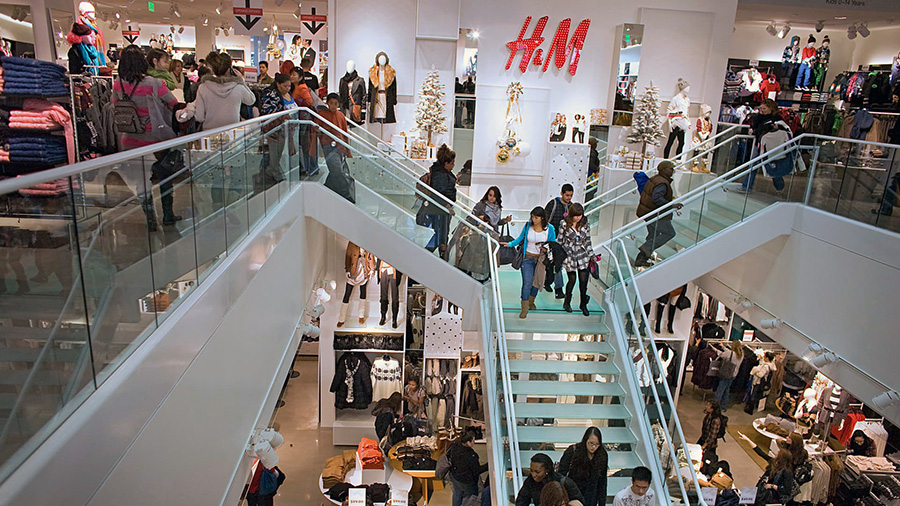Retail sales are expected to grow 3.8 percent this holiday season, according to the ICSC (formally International Council of Shopping Center’s ) 2023 holiday shopping forecast. The ICSC also forecasted a 7.6 percent increase in F&B (freight and beverage), bringing the total expected holiday spending to $1.60 trillion.
ICSC also released the results of its Annual Holiday Shopping Intentions Survey, which found that 235 million (90 percent) consumers plan to shop this year for the holidays.
“We expect a positive holiday shopping season this year as consumers continue to spend in spite of economic headwinds,” said Tom McGee, president and CEO of ICSC. “This year’s forecast shows the industry is balancing itself out after rapid growth over the last few years, setting retailers up for another successful holiday season.”
ICSC’s survey found that 8 in 10 shoppers expect to spend about the same as or more than last year during the holiday season, a slight uptick compared to the 73 percent who said the same in 2022, reflecting continued and consistent spending while navigating economic pressures.
Forty-two percent of consumers attributed their expectation for increased spending to inflation and a higher cost of holiday items, while 54 percent plan to spend less for the same reason. Thirty-eight percent said they expect to spend more as holiday deals and promotions provide more value for their spending. On the other hand, of those who plan to spend less, 43 percent said it was due to a change in budget, regardless of job status or income.
The survey also detailed where, how and when consumers intend to shop for the holidays. About 204 million (87 percent) expected to shop at brick-and-mortar stores this holiday season, while three-quarters of respondents said they plan to purchase online and have products shipped to them. Expected spending is split evenly between online and in-person shopping, with 41 percent of total expenditures expected to occur at a physical store, 42 percent spent online, and 17 percent on click-and-collect.
Consumers anticipate consolidating their purchases across fewer retailers this holiday season, as they plan to purchase from an average of 2.4 different types of retailers, compared to 3.4 in 2022. Discount department stores remain the most popular stop for 63 percent of shoppers. Traditional department stores are the second-most popular destination (34 percent), followed by electronics stores (22 percent).
Most consumers plan to pay with a debit (63 percent) or credit (50 percent) card when shopping. Nearly one-half (48 percent) expect to pay with cash, while 14 percent will use buy now, pay later options.
Gift cards will continue to be the most popular category for purchases for an item on the shopping list of 63 percent of respondents, followed by apparel and footwear (56 percent) and toys and games (49 percent). Forty-five percent of consumers plan to purchase food, while electronics and experiential purchases were cited by 41 percent and 22 percent of respondents, respectively.
As retailers continue to roll out seasonal products with deals earlier in the season, 79 percent of consumers plan to start shopping for the holidays earlier than normal. One-in-four consumers started their holiday shopping in August or earlier. Of the consumers who plan to shop earlier for the holidays, 51 percent do so for early promotions.
“This year will continue the trend of consumers starting their holiday shopping earlier and spreading it out throughout the season,” McGee added. “While landmark holiday milestones like Black Friday and Thanksgiving Weekend remain important, it’s equally important for retailers to capture consumer interest throughout the season. Offering competitive promotions, free and reliable shipping, and seamless omnichannel experiences throughout the holidays is a key part of that.”
The findings were based on a survey of 1,007 U.S. adults conducted online from September 22-24.














